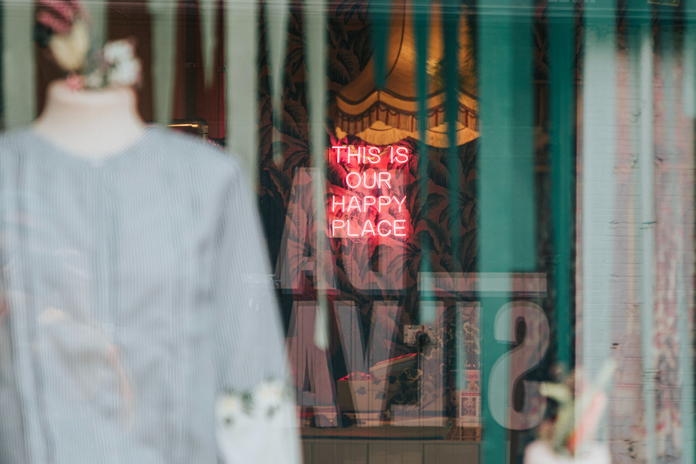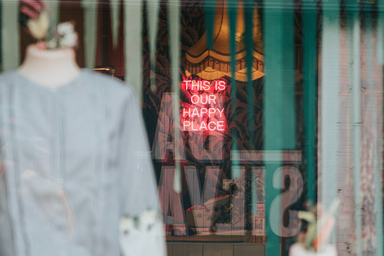… And why it’s time to slow down.
With recent reports of textile workers being paid just £3.50 an hour by the Leicester supplier of online retail giant Boohoo, the term ‘fast fashion’ has reached the UK headlines once again. But this isn’t news. A Financial Times article published in 2018 reported on the same Leicester factory and the illegal wages and conditions its workers faced. In fact, from the collapse of Bangladesh’s Rana Plaza factory building in 2013 (which claimed over 1000 lives) to reports of LA garment workers being paid just $6 an hour, the exploitation of garment workers across the globe has become synonymous with the fast fashion industry. Yet, it is just one of the many problems caused by this industry. So what exactly is fast fashion, and why does it continue to be a problem?
Defining Fast Fashion
Before delving into the dark side of fast fashion, and why it is becoming increasingly important to shift to more sustainable clothing sources and shopping habits, it is first key to understand what exactly fast fashion means. ‘Fast fashion’ is a term used to describe companies that replicate affordable versions of catwalk and streetwear trends at a rapid pace. The idea is to get the latest trends and styles on the market when they are most popular, to secure the most sales. And getting the most sales is vital. With each product being sold at a small markup, these fast fashion companies make their profits by selling an ‘ocean of clothing’, adding hundreds of new garments to their product line each week. Just this week, PrettyLittleThing has introduced 1193 new products to it’s website, whilst Missguided’s website boasts 753 new styles. This is ‘fast fashion’. It’s cheap. It’s trendy. It’s disposable.
Fast or Disposable?
According to Business Insider, people bought 60% more garments in 2014 than in 2000, but they only kept the clothes for half as long. According to the BBC, an estimated 92 million tonnes of textile waste is created globally each year. It seems like with each passing year more and more people are throwing away their unwanted clothes without a second thought. But why? What makes fast fashion disposable?
For starters, the fashion industry is designed to make you feel out-of-trend every week. Years ago, new trends were only introduced in two fashion seasons: Spring/Summer and Winter/Fall. These days, with the fashion industry churning out 52 ‘micro-seasons’ a year, new trends are introduced almost weekly. The constant influx of new, stylish items encourages the consumer to continually update their wardrobes with new purchases to keep up with current trends.
What’s more, to keep prices low and production rates high, corners are inevitably cut and low-quality materials are used when manufacturing these fast fashion items. And those discount stores that sell designer items for discount prices? More often than not, they’re the product of deals brokered that allow outlets to put designer labels on cheaply-made ordinary clothing. The result is clothes that only last a few washes before falling apart. It’s how the industry survives. With such low prices and clothes that don’t last, it is easy to discard out-of-trend clothing to make room for newer, trendier ones.
Fast and Poisonous?
So what happens to the clothes you throw away? Each year, 1.5 million textiles go into landfills in Britain. That’s 10,000 garments every 5 minutes, and it’s just the beginning of the problem. You see, the fast fashion industry’s negative environmental impact doesn’t start when the clothes are thrown away. It starts when the clothes are manufactured.
Making clothes requires a lot of water. 10,000 to 20,000 litres are needed to produce one pair of jean, and for every tonne of fabric almost 200 tonnes of water is used. This is clearly a problem, as seen from reports detailing how many cotton-producing countries like China and India are already suffering from medium-to-high levels of water stress, to claims from the CEO of the Environment Agency that England will not have enough freshwater to meet demands in 25 years. One thing is clear – we are running out of water. So, the industry’s excessive use of this precious staple is putting a further strain on what is already a finite resource.
On top of this, due to a lack of policing and regulations, for years garment factories have released their untreated post-production water waste in the rivers surrounding them. As a result, these rivers, often the primary water source for towns and cities, have been heavily polluted with cheap toxic residual dye, chemicals and microplastics. For example, despite being Greater Jakarta’s main water supply and vital for the irrigation of Indonesian rice farms, the disposal of toxic wastewater into the Citarum River led to it being labelled one of the world’s ten most polluted places in 2013. Contact with it has also been linked to many serious illnesses including cancer. And although, after much publicity, the government has now set up a restoration programme for the river, a lack of funding and policing has hindered it’s progress, and the river continues to be used for waste disposal.
And rivers like the Citarum river exist across the globe as a result of the fast fashion industry. In China, over 70% of the rivers are polluted, and just this year the Buriganga river in Bangladesh was found to contain 15,000 tonnes of plastic waste. These examples are just one of the reasons the industry can be called the second largest global polluter of clean water. Another is the problem of microplastics. Too small to be filtered, each load of synthetic clothing thrown into the washing machine can release up to 700,000 microplastic particles into the water. These particles often end up collecting on riverbeds or at sea where they can be ingested by various sea life and entered into the food chain. Not only do they cause serious health problems in sea life, but, if passed through the food chain and ingested by humans, microplastics can lead to an array of health issues in humans too. The ingestion of microplastics has been linked to organ damage as well as the compromisation of the immune system, growth and reproduction through the release of toxic chemicals like Bisphenol A into the body.
Time to Slow Down
The exploitation of workers. The unsafe work conditions. Microplastics. Polluted rivers. These are just some of the reasons why it is time for us to change the way we shop and slow down. Lots of sustainable fashion brands partake in slow fashion, a movement that focuses on using natural materials to make high-quality, long-lasting clothes. It advocates fair labour rights, working conditions and wages for garment workers. By shopping with sustainable brands like Pact and Happy Earth, donating old clothes to charity shops or even just simply buying less, we can all do our part to slow down the negative impact of fast fashion.



